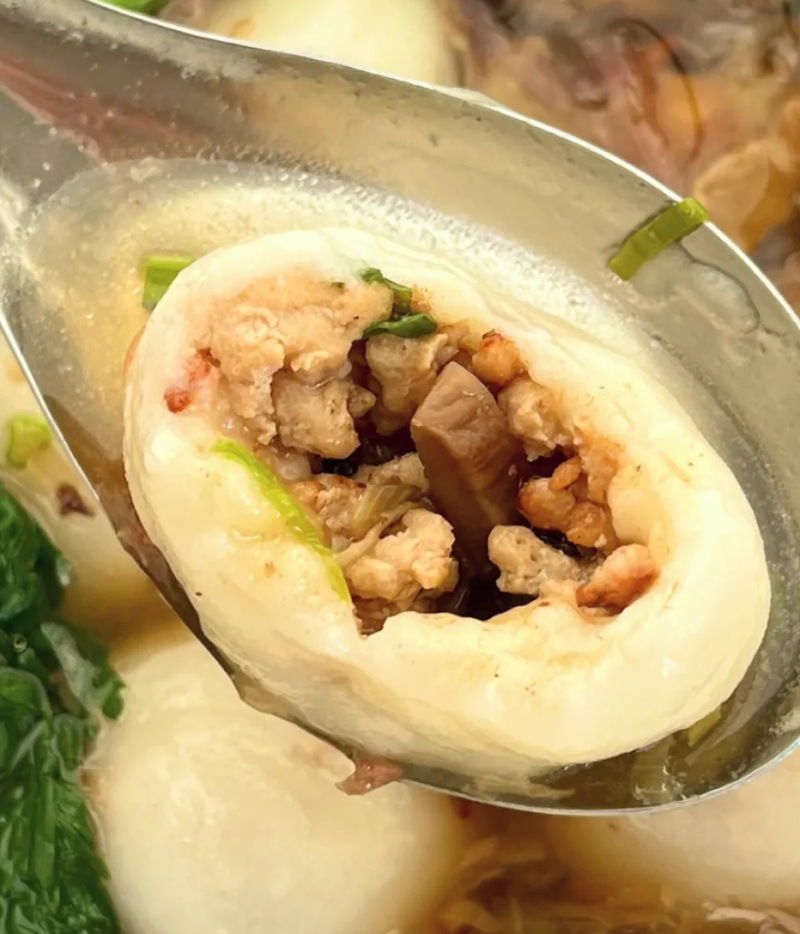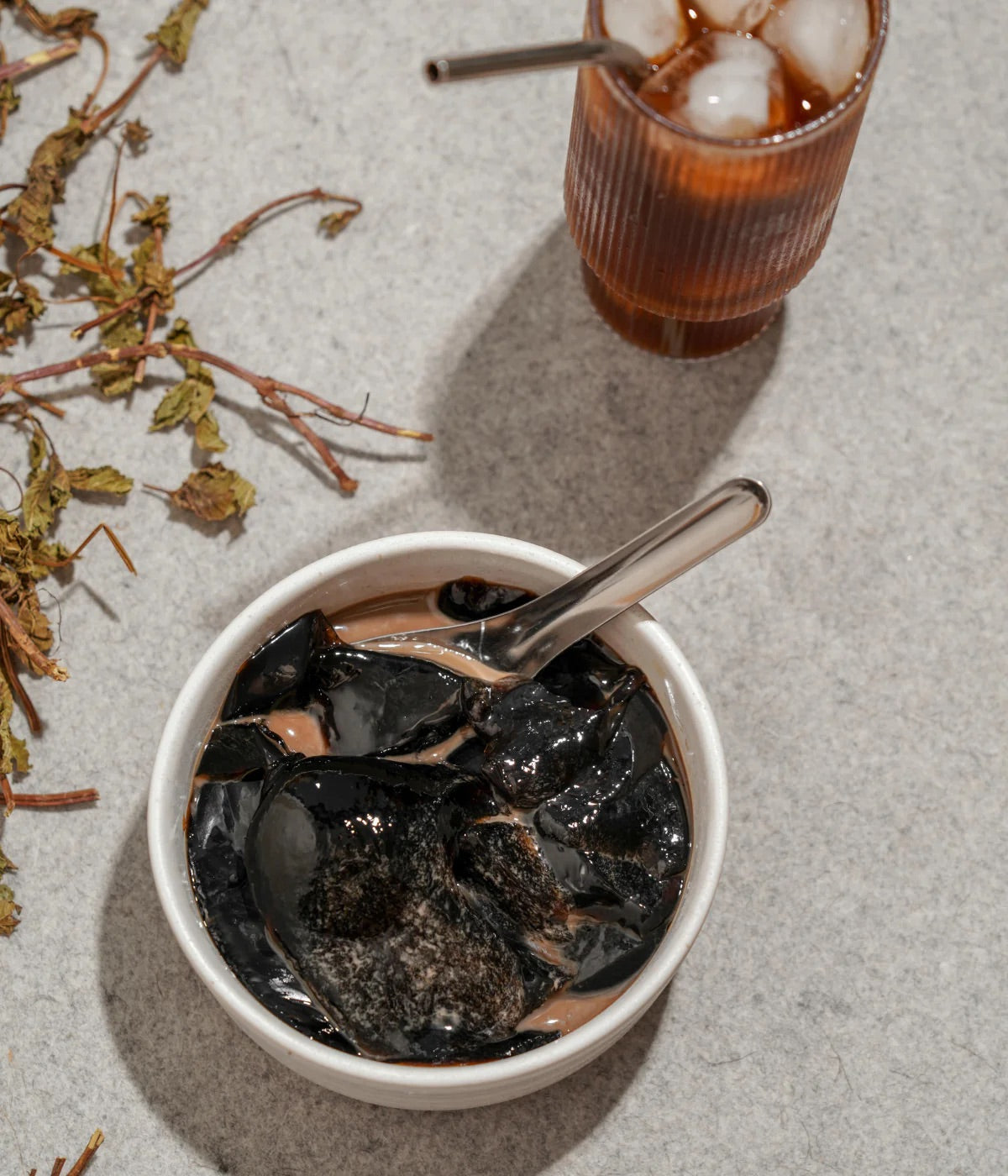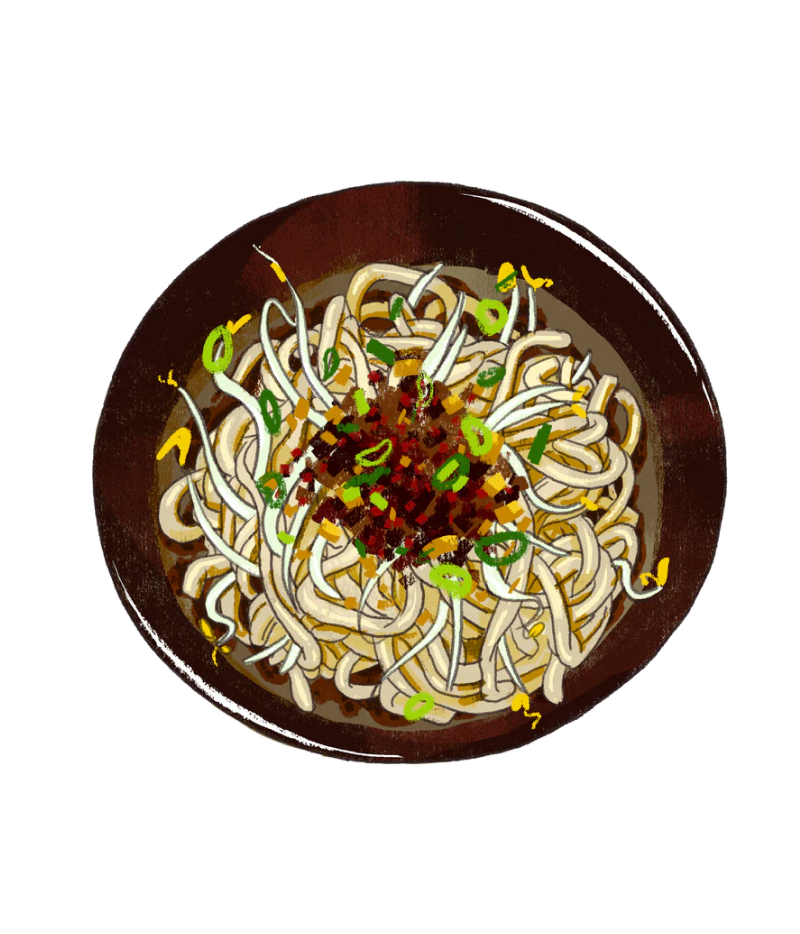Hakka-Style Tang Yuan 客家鹹湯圓

Most commonly, tang yuan are either unstuffed or filled with a runny, sandy black sesame or peanut paste. Today, you can find flavors like black sugar boba, matcha, salted egg yolk, and Kit Kat. I personally prefer the good ol’ black sesame and peanut flavor; I am innately a savory over sweet person.
So today, I’m introducing a less globally known Tang Yuan style: the Old School Hakka Savory Tang Yuan 古早味客家鹹湯圓. The Hakka are Taiwan’s largest minority group and are an important part of the Chinese diaspora worldwide. Food in Taiwan is a melting pot of cultures and Hakka cuisine is one of the largest influences (hello, pork belly with preserved mustard greens 梅菜扣肉 or 梅干扣肉).
The key to making this a Hakka tang yuan is not the tang yuan dough itself, but the rich savory broth that it’s served in. Fried shallots, dried shrimp, pork, Chinese celery, Chinese chives, mushrooms, tong ho 茼蒿 (chrysanthemum) and a generous dash of white pepper are all important components to this dish. The QQ texture and semi-sweet flavor of the glutinous rice balls (either unstuffed or filled with equally umami contents) enveloped in an umami broth is an unquestionably artful combination.
Hakka-Style Savory Tang Yuan
客家鹹湯圓
Serves: Serves 2 as a main or 4 if presenting with a few other dishes.
Prep Time: 10 minutes
Cook Time: 20 minutes
Basic Unfilled Tang Yuan
can make ahead and freeze
makes 12 tang yuan
Glutinous rice dough can be dry and difficult to work with. To make a smooth and elastic dough, we use a method where a small part of the dough is cooked and kneaded back in, known in the Hakka dialect as the Ban Ma method 粄(粿脆)法. In Hakka, Tang Yuan are called Ban Vien or Ban Rhan. The word Ban means “snacks made from glutinous rice flour,” “Ma” means mother, and “Vien/Rhan” means “round”.
Ingredients
- 1 cup glutinous rice flour
- ½ cup warm water
Instructions
- Place the glutinous rice flour in a mixing bowl. Slowly add in the warm water while mixing.
- The dough should not be wet or sticking to the bowl or your hands. If it is too wet, sprinkle a bit more glutinous rice flour and knead until smooth.
- Cover and rest the dough while you bring a pot of water to boil.
- Now to make the Ban Ma: When the water is boiling, pinch off a piece of the dough, roughly around 1” sized ball. If you’re doubling the recipe, you could flatten this into a disc so it cooks evenly.
- Add the 1” dough ball into the water and cook until it floats to the surface.
- Remove the cooked ball of dough and knead it back in with the uncooked dough.
- Knead until the dough is soft and smooth (like a baby’s butt, as they say).
- Divide the dough into 12 pieces of 18-20g each, and roll them into balls. Keep them covered with a damp cloth as you work, so they don’t dry out.
- At this stage you can choose to cook the unfilled Tang Yuan to put into the Hakka broth or follow the next set of instructions to stuff the Tang Yuan with a savory filling. You can also freeze them (they can be cooked straight from the freezer).
- To cook unstuffed tang yuan: Bring 6 cups of water to boil. Gently lower the tang yuan into the boiling water. Cook for about 4 minutes. When the tang yuan are just about to touch the surface of the water scoop them out with a slotted spoon. Finish cooking the tang yuan in the savory Hakka stock (see below) for the last 2 minutes.
Savory Stuffed Tang Yuan
can make ahead and freeze
makes 12 tang yuan
In this recipe we make use of several of our savory pantry ingredients, but feel free to substitute with what you have.
Ingredients
- 12 pieces of plain unstuffed rolled Tang Yuan (see instructions above)
- 3 dried shiitake mushrooms (about 15g), soaked in warm water for 30 minutes and diced into cubes.
- 10g dried shrimp, soaked in warm water and minced
- 2 x 1” dried radish 菜脯, soaked in warm water and minced
- 3 oz. ground pork (or ground chicken)
- 1 stalk Chinese celery, washed and sliced into thin pieces
- 1 stalk scallion, washed and sliced into thin rounds
- 2 tablespoon Shaoxing wine
- 1 teaspoon Dong He Black Sesame Oil
- 3 tablespoons of Dong He Cold Pressed Peanut Oil
- 1 tablespoon Yu Ding Xing Glutinous Rice Soy Paste
- ½ teaspoon sugar
- ½ teaspoon white pepper
- 1 teaspoon salt
- ¼ teaspoon msg, optional
- 3 tablespoons of water
- cornstarch slurry: 1 teaspoon cornstarch + 1 teaspoon water
Instructions
- Heat 3 tablespoons of peanut oil until smoking.
- Add in the dried shrimp and cook until fragrant (2-3 minutes)
- Add in the ground chicken (or pork). Stir fry until golden and the juice of the meat evaporates (5-7 minutes).
- Add in the chopped shiitake mushrooms and radish. Fry until golden.
- Deglaze the pan with the Shaoxing wine and cook for 30 seconds.
- Add in the sauce: sesame oil, sugar, salt, white pepper, soy paste, msg (if using) and 3 tablespoons of water.
- Stir fry for 2 minutes.
- Add in the celery and scallion and stir fry for 5-8 minutes, until softened.
- Add in the cornstarch slurry.
- The filling is done when it’s thick and no runny liquid is left. Place filling into bowl and let it fully cool.
- To Fill: Using your fingers, flatten one Tang Yuan ball into a rounded disc. Spoon about 1-1.5 teaspoons of filling into the middle of the disc. Fold over the edges of the dough to enclose the filling inside. If it cracks just use your fingers to gently pinch together the dough. Then roll the tang yuan between the palms of your hand to even it out. Repeat process until all the tang yuan are filled.
- To Cook: Bring 6 cups of water to boil. Gently lower the tang yuan into the boiling water. Cook for about 4 minutes. When the tang yuan are just about to touch the surface of the water scoop them out with a slotted spoon. Finish cooking them in the savory Hakka stock for the last 2 minutes.
Hakka-Style Savory Broth
2 full meal servings or 4 snack sized servings
Ingredients
Broth
- 20g dried shrimp, soaked and roughly chopped
- 6 pieces medium sized dried shiitake (about 18g), soaked in warm water for 30 minutes, stems trimmed and sliced.
- 1-½ cup Chinese chives or scallions, cut into ½” lengths
- ½ cup Chinese celery, washed and minced
- 1 lb tong ho 茼蒿 greens (chrysanthemum), washed and trimmed
- 0.7 lb pork belly, trimmed of skin and cut into quarter inch thick slices
- 2 medium sized shallots, peeled and sliced thin
- 1.5 teaspoon white pepper
- 1 tablespoon camellia or peanut oil, for frying
- Salt, to taste
- ¼ cup rice wine (Taiwanese or other)
- 5 cups pork or chicken broth (or water)
- 12 pieces parboiled Tang Yuan (unfilled or filled)
Garnish (all optional)
- scallions
- cilantro
- ½ reserved fried shallots or a teaspoon of Dong He Fried Shallot Oil
- Su Chili Crisp, Cilantro Flavor
- Yu Ding Xing Taiwan Pineapple Soy Sauce
Instructions
- Heat camellia or peanut oil until slightly smoking in a wok or wide bottom skillet
- If using fresh shallots, add in the and fry until golden.
- Once the shallots are golden use a slotted spoon to remove the shallots and ½ the oil from the pot and reserve in a bowl.
- Next add in the pork belly and stir fry until any juices are evaporated and the fat is rendered (5-8 minutes).
- Add in the dried shrimp and fry until fragrant (1 minute).
- Add in the shiitake mushroom slices and fry until golden (5-7 minutes). If you need more oil you can add some of the reserved shallot oil.
- Add in the Chinese celery and fry for 1 minute.
- Deglaze the pan with rice wine and cook for 30 seconds.
- Add in 4 cups of pork broth or water and half of the fried shallots.
- Add in the chives or scallion.
- Add in white pepper and bring the stock to a boil for 5-8 minutes, so the flavors come together.
- Add in the parboiled tang yuan and tong ho greens and cook for 2-4 minutes. You want to simmer the Tang Yuan in the broth for a bit so the flavors incorporate into the dumpling.
- Taste and adjust seasoning and add salt, if needed. Serve in bowl and garnish with more fried shallots, scallions, a pinch of cilantro leaves, and a drizzle of chili oil and soy sauce.



